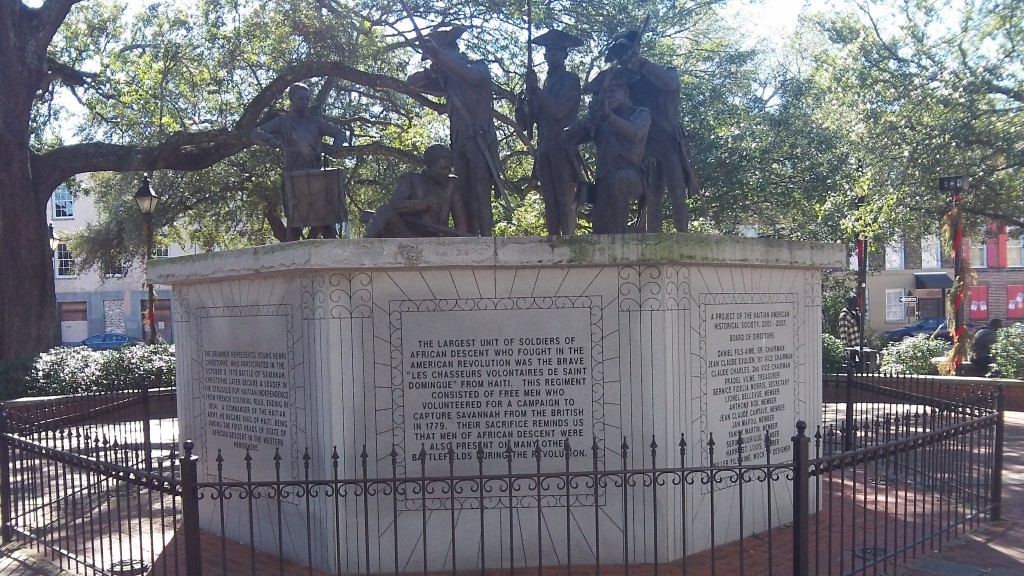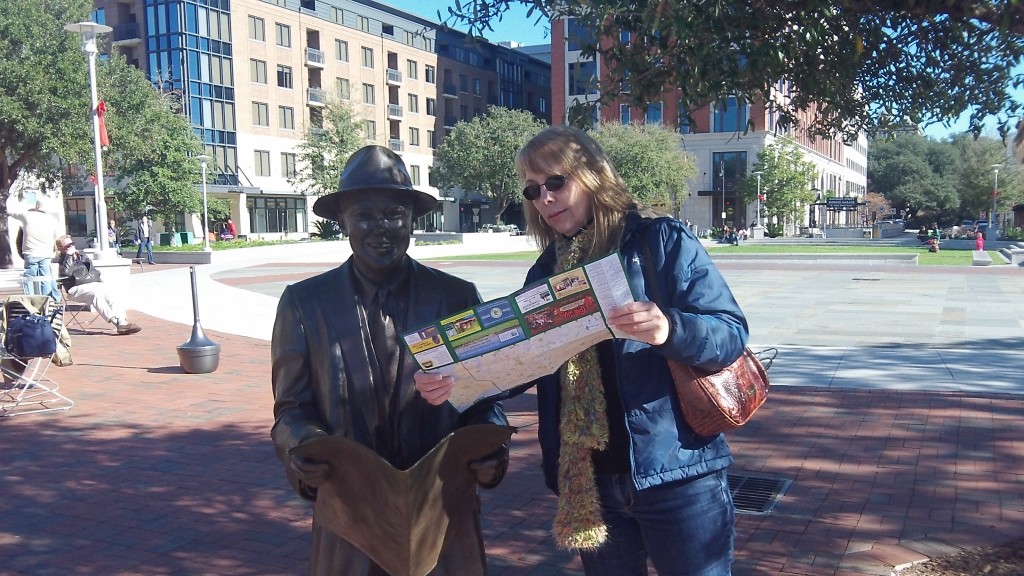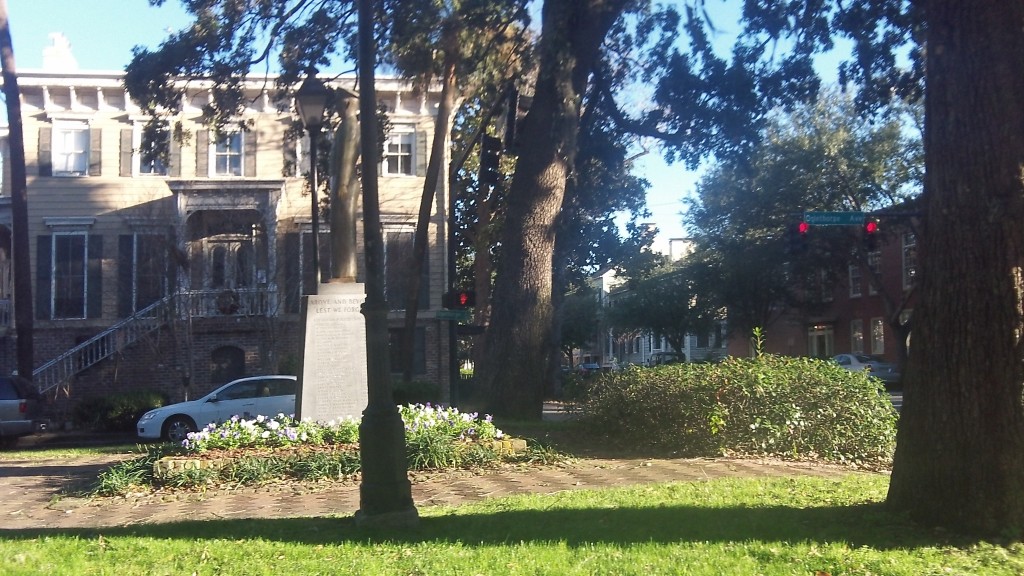My family has brought many things Irish into our traditions as a direct result of the research I did while writing Casting Off. For example, we hang St. Bridget’s Crosses above or at our doors. We have endeavored to replace the crosses with new ones each February 1, but as we are now scattered across the United States, this has been difficult. Finding fresh rushes from which to make the crosses has also been a trial. But there they are, above our doors when we visit and we hand them out to others outside the family when we see a need.
St. Patrick’s Day is also a major holiday in my family now and we try to come together always to celebrate it. But we do not drink green beer or make green cupcakes or get so drunk we circle over Shannon, so to speak. We mark it like it is another Thanksgiving. We cook a dish that takes a lot of time, spending the day working and talking and laughing and playing together – which brings me to what we eat. We do NOT make corned beef and cabbage. That is not a traditional Irish dish, as far as I can tell, though I have found it in many Irish cookbooks. I believe pork butt and cabbage would be a closer dish to the traditional if you had in mind a boiled dinner. We do not make that either. After many discussions between my sister-friend and I, we decided our traditional dish would be Beef and Guinness stew with Irish soda and Wheaten Bread.
The recipes follow and we would like to say that these are not ours exactly. They are combinations of many different Irish cookbooks and a few of our own touches. My sister-friend is more forgiving than I as to what can go into these dishes. I suppose, if you are truly Irish, you can change the dish and it would still be Irish. I, however, have about as much Irish in me as anything else and can hardly claim direct lineage within three or four generations. Thus, we have left the recipes as “traditional” as we could. Feel free to use them and make them your own. And if you must, go ahead and add garlic to the stew (ugh). As you can tell, my sister-friend and I have had many heated discussions on these recipes, but generally can come to an agreement over a hot Irish whiskey. Oh yeah. Feel free to drink on St. Patrick’s Day. We, however, drink about as much as we would on Thanksgiving for the day is a warm celebration, not cold inebriation. It’s about sharing all things with family and friends and who knows, maybe nine months later, your family will grow, just as ours did, from the gentle care of the day – or the Irish whiskey.
Beef and Guinness according to the Sister-Friends
5 lbs stew meat (shin, rump, or grocery defined “stew”) cutt into ½ inch cubes
Flour, salt, pepper
Canola or other vegetable oil
3 medium onions chopped
6-8 medium carrots (varies to taste), peeled and cut into one and a half inch pieces
3 prunes (varies to taste) quartered
2 cups water (or beef stock) and Guinness mixed
1 large sprig thyme
1 medium bay leaf
Parsley
In a plastic or paper bag, place 4 Tbls flour, ¼ or less tsp salt, and a little less than 1/8 tsp freshly ground pepper. Shake to mix. Brown meat in batches by:
Placing around 1 cup or so cut stew meat into bag and shake to dredge. Heat a 5 quart dutch oven or other large, oven-safe stew pot, add 2 Tbls oil. Without crowding meat, gentle brown stew meat. (If we have any fat pieces left over from cutting up the meat, we will sauté that into the canola oil a bit and then remove. It adds a deeper flavor.) Remove browned meat and place on warm plate in oven. Repeat process until all meat is browned.
Add a tablespoon of oil to dutch oven and toss in onion. Sauté until just clear and then return to pot browned meat. Add the Guinness and water mixture, sprig of thyme, prunes, and bay leaf. Stir. The stew will look very thick at this point but do not add any more liquid just yet. Bring to a slow boil over medium heat, then reduce and simmer. I always have gas stoves and Amy has electric and no matter what we do, the meat tends to stick to the bottom of the pot, making black, undesirable bits in the stew. We recommend sticking the stew in the oven on 350 with the lid on and stirring every quarter to half hour. Reduce heat if the stew is boiling. It should only be simmering. It is when you stir that you check to see if the stew is getting too thick. If so, add equal parts Guinness and water. The stew should be thick but not pasty. Cook for an hour and fifteen minutes and then add carrots. Cook for another 45 minutes. Add chopped parsley when there is about 15 minutes left. Total cook time is 2 hours. Correct seasoning with salt and pepper.
Other considerations (aka Heated Discussion 1 – Stock or No Stock, Garlic or no Garlic, More Prunes or less Prunes)
A. Since there is meat in the stew, water is fine. If beef stock is added, it is good to use a mild one so as not to change too terribly the flavor of the Guinness. If you want to add stock and have time, make your own. Simple recipe follows:
Beef stock
One half pound beef shank or other beef stew bones, roasted in a 400 degree oven for about an hour and a half to two hours.
Four quarts water, two medium onions quartered, interior of celery stalk (where all those leaves are) chopped roughly, and three carrots, skin on and cut in one inch pieces.
Place cooked bone into water, add all vegetables and cook for two hours. Salt and pepper to taste. Yum.
B. Garlic – Be free but did Ireland have garlic when they started cooking this dish? Somehow, I doubt it.
C. Watch out for the prunes! The prunes cut the bitterness of the Guinness but a little goes a long way. They add a sweetness. If you are adding more Guinness because your stew keeps thickening, add prunes in quarters for each ½ cup Guinness. When you add the carrots, they’ll sweeten the stew, too. Too many prunes and you’ll end up with sweet stew. Not good. Trust me on this one.
Wheaten Bread
We don’t use wheaten but do use whole wheat. The recipe isn’t ours, but it is the best one we’ve found. The website is Handmade Homeschool under “recipe”:
2 Cups all purpose flour
2 cups whole wheat flour
2 Tbls sugar
1 tsp salt
1 tsp baking soda
3 Tbls butter chilled
1 1/3 buttermilk
2 egg whites
Mix dry ingredients together well and then cut in butter. Mix the egg whites into the buttermilk and when done, add all to flour. Stir and knead a little until all ingredients are incorporated. Dough should be a bit sticky. Place in the middle of a lightly floured cookie sheet and into a 375 degree oven for 30-45 minutes. See considerations below.
Irish Soda Bread
Soda bread is not like a yeast bread. It should be kind of sticky when the ingredients are all mixed together. I think so many soda breads come out dry as the dust in Arizona because the mixture is so sticky, people mistake the dough as needing more flour. It doesn’t Just plop the dough onto a baking sheet in a round mound and cook. Also, use the best buttermilk you can find – one from a local dairy, if possible. So good and moist!
Four cups plain flour
1 tsp salt
1 tsp baking soda
1 tsp sugar
1 pint buttermilk
½ cup currants (optional)
Mix dry ingredients together first. Add buttermilk. Stir mixture and knead until just incorporated. Do not over knead. Dough should a bit wet. Place on a lightly floured cookie sheet and bake at 450 degrees for 30 to 45 minutes.
Consideration – Watch the oven temp. If your oven is too hot, the outside will start to darken too quickly and the inside of the bread will remain uncooked. If your bread is browning too quickly, cover it with foil. The bread is done when the outside is brown and when picked up and knocked on the bottom, the loaf sounds hollow. This is also true for the Wheaten bread.
Heated Discussion 2 – Potatoes – we chose the bread.
Heated Discussion 3 – Vegetable – we chose a green salad.





